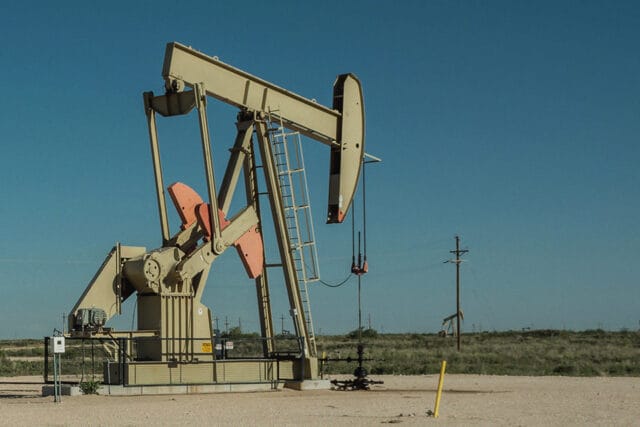
Enhancing Safety and Compliance in the Energy Sector Through Digital Transformation

The energy sector, spanning oil and gas extraction, power generation, transmission, and distribution, faces complex safety regulations and compliance requirements. Traditional methods often rely on manual processes, paperwork, and fragmented data, leading to inefficiencies, higher costs, and increased risk. Fortunately, digital solutions offer a powerful path to improve safety, streamline compliance, and boost operational efficiency. This article explores how digital technologies enhance safety and compliance in the energy industry.
Enhancing Safety Through Digitalization
Many safety incidents in the energy sector result from human error, inadequate training, and limited real-time visibility. Digital tools help solve these issues by introducing more automation, data integration, and proactive monitoring.
Real-Time Monitoring and Predictive Maintenance
Internet of Thing (IoT) sensors and advanced analytics enable real-time monitoring of critical assets like pipelines, turbines, and transformers. These sensors track parameters such as temperature, pressure, vibration, and gas leaks. When issues arise, systems send alerts before failures occur.
Predictive maintenance uses this data to forecast equipment service needs. This proactive approach minimizes downtime and reduces the risk of accidents caused by unexpected failures.
Wearable Technology Improves Worker Safety
Smart helmets, glasses, and wearable sensors significantly enhance worker safety. Smart helmets monitor vital signs, detect falls, and track worker’s location. Smart glasses display safety procedures and work instructions in real time. Body cameras capture footage for training or incident analysis.
Collectively, these tools offer situational awareness and promote safer decision-making on hazardous job sites.
Digital Risk Assessment and Management
Modern risk management platforms use historical data, real-time monitoring, and external inputs, like weather, to assess hazards. These platforms alert teams to emerging risks and suggest mitigation strategies. Advanced simulations also model “what-if” scenarios to improve emergency planning and response.
This approach helps energy companies identify and neutralize risks before they cause harm.
Immersive Training and Competency Tracking
Digital learning platforms offer interactive safety training through simulations and virtual reality. Workers can practice emergency scenarios without real-world risk. Augmented reality can overlay safety instructions onto equipment during training or maintenance.
These platforms also track certification records and performance data. This ensures every worker is qualified and up to date on essential safety procedures.
Sustainable Contractor Prequalification in the Energy Sector
In the energy sector, managing contractor risk is essential. Traditionally, prequalification involved slow paperwork and inconsistent evaluations. Digital tools now automate and enhance this process, improving sustainability and safety.
Streamlined Contractor Evaluations
Software-as-a-Service (SaaS) platforms allow energy companies to digitize contractor evaluations. These platforms verify insurance, assess credit, review training records, and evaluate written programs, all in a single, streamlined interface.
They also assess contractors’ Environmental, Social, and Governance (ESG) practices. As a result, companies can ensure partners align with their sustainability and compliance goals.
Continuous Monitoring and Accountability
Digital platforms provide ongoing oversight of contractor performance throughout a project’s lifecycle. If safety or compliance issues arise, companies receive real-time alerts. This allows immediate corrective action, reducing delays and avoiding accidents.
Enhancing Transparency Across the Supply Chain
Digital tools foster open communication between companies and their contractors. Real-time analytics support future planning and create transparency across the supply chain.
Sharing safety data and performance metrics encourages all stakeholders to maintain high standards. In the long term, this transparency builds trust and promotes safer, greener operations across the energy sector.
Streamlining Compliance with Digital Solutions
Regulatory compliance in the energy sector requires accurate documentation, fast reporting, and constant monitoring. Digital platforms help companies stay ahead of audits, inspections, and industry standards.
Automated Document Management
Paper-based permit systems are slow and prone to errors. Digital document management platforms create centralized, searchable repositories for all compliance files. Automated workflows simplify permit applications, inspections, and reporting.
This ensures all documentation is audit-ready and up to date.
Compliance Analytics and Dashboards
Digital systems can analyze large volumes of operational data to uncover trends and potential violations. Compliance dashboards help leadership track key performance indicators (KPIs) in real time. When issues arise, companies can act quickly to prevent fines or downtime.
Over time, data insights help teams refine safety and compliance processes.
Environmental Monitoring and Reporting
Digital sensors help energy companies track emissions, water quality, and other environmental metrics. This ensures compliance with environmental laws and reduces ecological impact.
Automated reporting systems minimize staff workload and boost accuracy. As a result, companies meet requirements more efficiently and reduce environmental risks.
Improving Supply Chain Compliance
The energy sector depends on complex, global supply chains. Blockchain and other digital technologies improve transparency by recording every transaction securely and immutably.
These tools help companies confirm that materials are sourced responsibly and that waste is handled properly. By improving traceability, organizations avoid regulatory issues and strengthen supplier accountability.
Integration Is the Key to Holistic Compliance in the Energy Sector
The full benefits of digitalization emerge when companies integrate safety, compliance, and operational tools into one system. Integration allows data to flow freely across teams and departments.
Centralized Data Platforms
Centralized systems combine inputs from IoT devices, wearables, and compliance software. This creates a “single source of truth” for safety and compliance data, improving decision-making.
Interoperable Systems and Standardization
To ensure seamless integration, companies need tools that can communicate and share data. Interoperability—supported by standard formats and protocols—eliminates data silos and enables smoother workflows.
Robust Data Security Measures
Data privacy is vital in the energy sector, where sensitive safety and environmental data are constantly collected. Strong encryption, access controls, and regular audits protect against cyber threats and unauthorized access.
Feedback Loops and Continuous Improvement
Digital systems should evolve alongside business needs. Built-in feedback mechanisms help companies analyze past performance, identify weak spots, and implement improvements.
This agile approach ensures safety and compliance programs stay effective, even as regulations change or new risks emerge.
Challenges to Digital Transformation in the Energy Sector
Despite the benefits, digital transformation in the energy sector poses challenges. Success requires thoughtful planning and a long-term vision.
- High Upfront Costs: Implementing new systems requires investment in hardware, software, and training. However, long-term savings and risk reduction often outweigh initial costs.
- Complex Integration Requirements: Combining legacy systems with modern tools can be difficult. Companies may need expert support to ensure a smooth transition.
- Cybersecurity and Privacy Concerns: As data volumes grow, so does the risk of breaches. Organizations must prioritize cybersecurity when choosing and deploying digital solutions.
- Cultural and Organizational Resistance: Digital transformation often requires a cultural shift. Companies must support staff with clear communication, adequate training, and change management strategies.
Conclusion: The Future of the Energy Sector Is Digital
In today’s high-risk environment, digital transformation is no longer optional for the energy sector. Companies must adopt smart tools to meet safety and compliance demands. By embracing IoT, artificial intelligence, and advanced analytics, energy businesses can create safer worksites, streamline processes, and ensure long-term sustainability.
Although challenges exist, the rewards are significant: fewer accidents, faster audits, reduced costs, and a stronger market position. Most importantly, digital solutions enable a future where safety and sustainability go hand in hand, transforming the energy sector for the better.
About the Author
James A. Junkin, MS, CSP, MSP, SMS, ASP, CSHO is the chief executive officer of Mariner-Gulf Consulting & Services, LLC and the chair of the Veriforce Strategic Advisory Board and the past chair of Professional Safety journal’s editorial review board. James is a member of the Advisory Board for the National Association of Safety Professionals (NASP). He is Columbia Southern University’s 2022 Safety Professional of the Year (Runner Up), a 2023 recipient of the National Association of Environmental Management’s (NAEM) 30 over 30 Award for excellence in the practice of occupational safety and health and sustainability, and the American Society of Safety Professionals (ASSP) 2024 Safety Professional of the Year for Training and Communications, and the recipient of the ASSP 2023-2024 Charles V. Culberson award. He is a much sought after master trainer, keynote speaker, podcaster of The Risk Matrix, and author of numerous articles concerning occupational safety and health.




